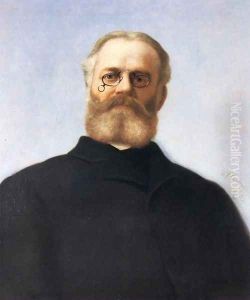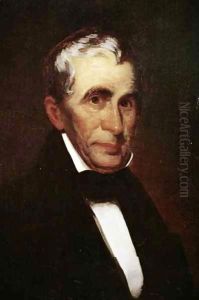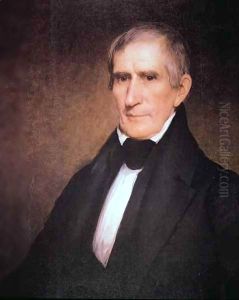Eliphalet Andrews Paintings
Eliphalet Frazer Andrews, born in 1835 in Steubenville, Ohio, was an American portrait painter whose work became synonymous with the elegance and formality of American portraiture in the late 19th century. Andrews' journey into the art world was marked by his passion and dedication to mastering the craft of painting, leading him to Europe for formal training. He studied under notable artists such as Thomas Couture in Paris, a city that was, at the time, the epicenter of artistic innovation and classical training. This period was crucial in shaping Andrews' style, imbuing his work with a blend of American sensibilities and European techniques.
Upon returning to the United States, Andrews established himself in Washington, D.C., where he quickly became a sought-after portraitist among the political and social elite. His portraits are known for their meticulous detail, vibrant colors, and the ability to capture the essence of his subjects. One of his most notable works is the portrait of President Rutherford B. Hayes, which exemplifies Andrews' skill in portraying not just the physical likeness but the character and stature of his subjects. This painting, along with others, solidified his reputation and led to numerous commissions from politicians, judges, and prominent societal figures.
Beyond his individual portraits, Andrews was also influential in the cultural life of Washington, D.C. He served as the director of the Corcoran Gallery of Art, one of the city's premier art institutions. In this role, he was instrumental in shaping the gallery's collection and its educational programs, fostering a greater appreciation for the arts within the community. His contributions extended to teaching, where he mentored the next generation of artists, passing on his knowledge and passion for painting.
Eliphalet Frazer Andrews' death in 1915 marked the end of a prolific career that left a lasting impact on American portraiture. His works continue to be celebrated for their artistic merit and historical significance, offering a window into the personalities and cultural mores of his time. Andrews' legacy is preserved in the collections of major museums and galleries across the United States, where his portraits remain a testament to his skill and dedication to the art of painting.


